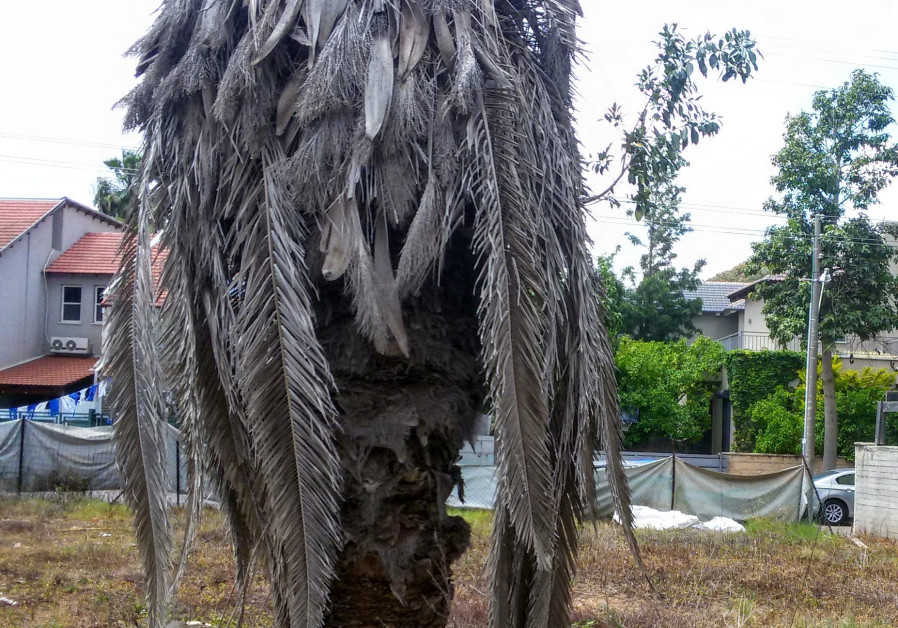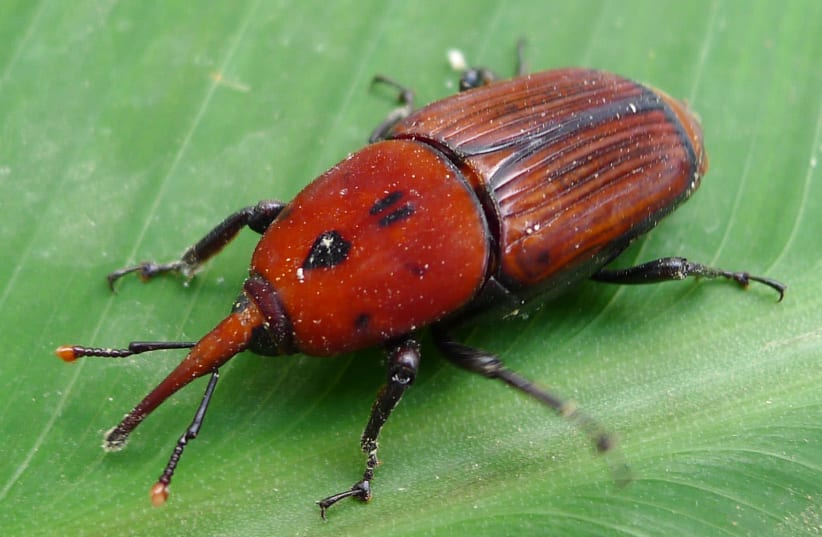Countries all over the world are battling another major pandemic: Red palm weevils. Originating from Asia, the insect soon made its way across the world and became a major invasive species, wrecking severe havoc on palm trees and other agriculture across the planet.
But now, scientists from Israel's Ben-Gurion University of the Negev may have found a way to automatically detect red palm weevil infestations.
The red palm weevils have only become more widespread in the last decade. Studies have shown that these weevils target 19 different types of palm trees, making them one of the worst palm tree pests worldwide. These insects tend to go to lay their eggs in trees. Their larvae is actually considered a delicacy in some countries, but farming them is also strictly banned in some places like Vietnam due to the damage they can cause to plantations. This is because of how they grow. After hatching, the larvae eat through the tree as they grow, creating tunnels inside the trees and weakening them, sometimes even causing them to break and completely collapse.


According to the European and Mediterranean Plant Protection Organization, these weevils can be found in 85 countries, and they can spread at a rate of 50 kilometers per day due to their fast flight-speed, according to a 2015 study. According to one 2006 study, it is estimated that they were present in 15% of all coconut-palm-growing countries and 50% of all date-palm-growing countries. As such, it is essential to detect these infestations early before they can grow, spread and wreck havoc. However, the only way to do has long been through the use of a very laborious, time consuming and impractical method: visual and acoustic assessment of each individual tree.
Until now. A new method was recently developed by Dr. Michael Fire, of BGU's Department of Software and Information Systems Engineering and head of the Data4Good lab, after having had to protect a tree in his front yard from infection.
"I started thinking, what if I could help the municipality by developing a way for them to monitor all of the palm trees?" Fire explained in a statement.
With his team, Fire devised a global monitoring system through the use of Google aerial and street view. Using images of palm trees from the aforementioned service, the team trained used deep learning to train three models: One to detect palm trees in aerial view, one to detect them in street view and another to classify infected palm trees.
The team tested this system on images from San Diego, where there had been a red palm weevil infestation in 2016, and were successful in identifying three out of four infected trees.
Further successful tests were carried out in Israel and Miami.
While the system isn't perfect, it can serve to help detect severe and medium infections, and a future, more refined system could possibly help with early detection.
The findings were published on Arxiv.

